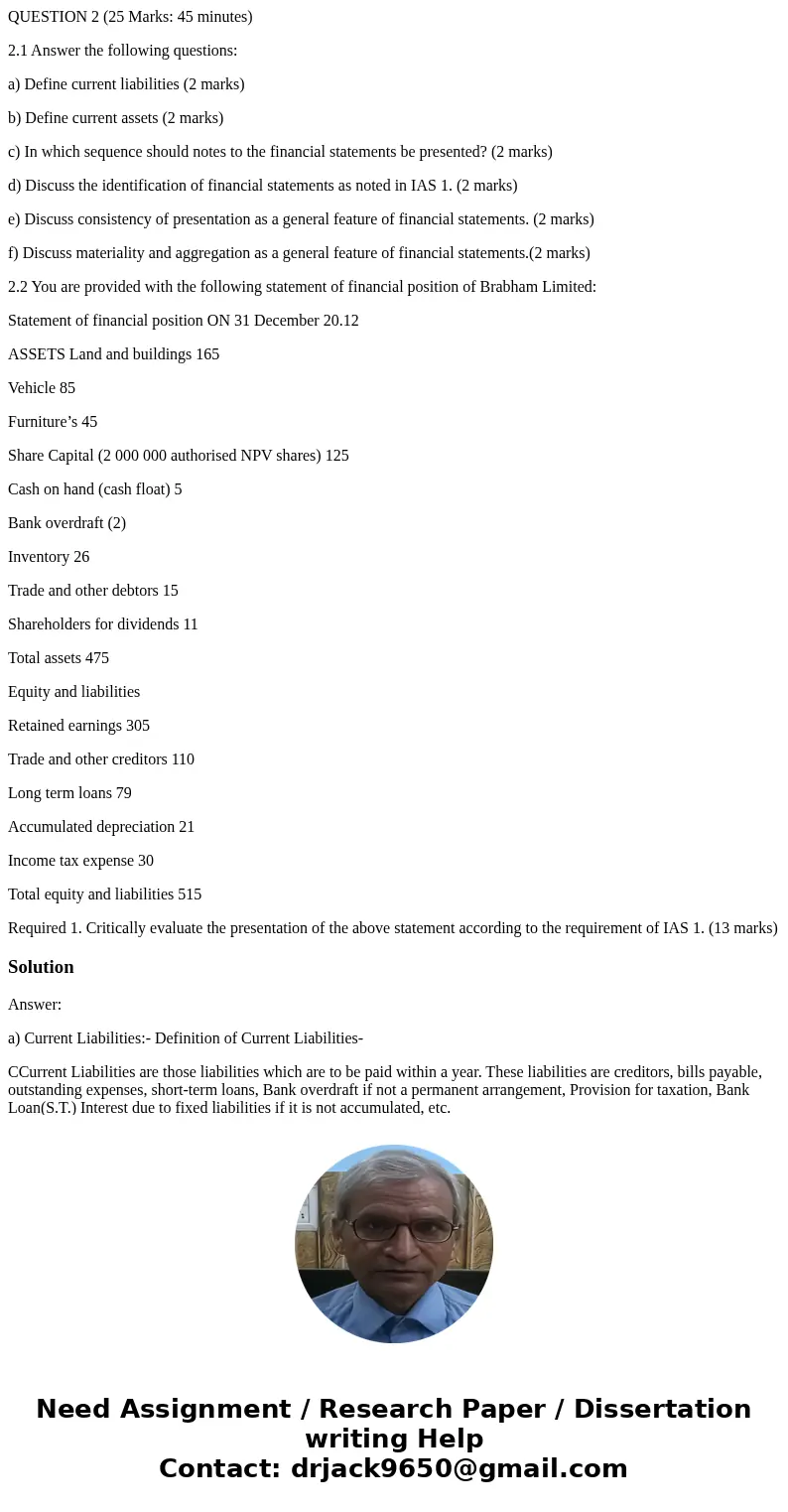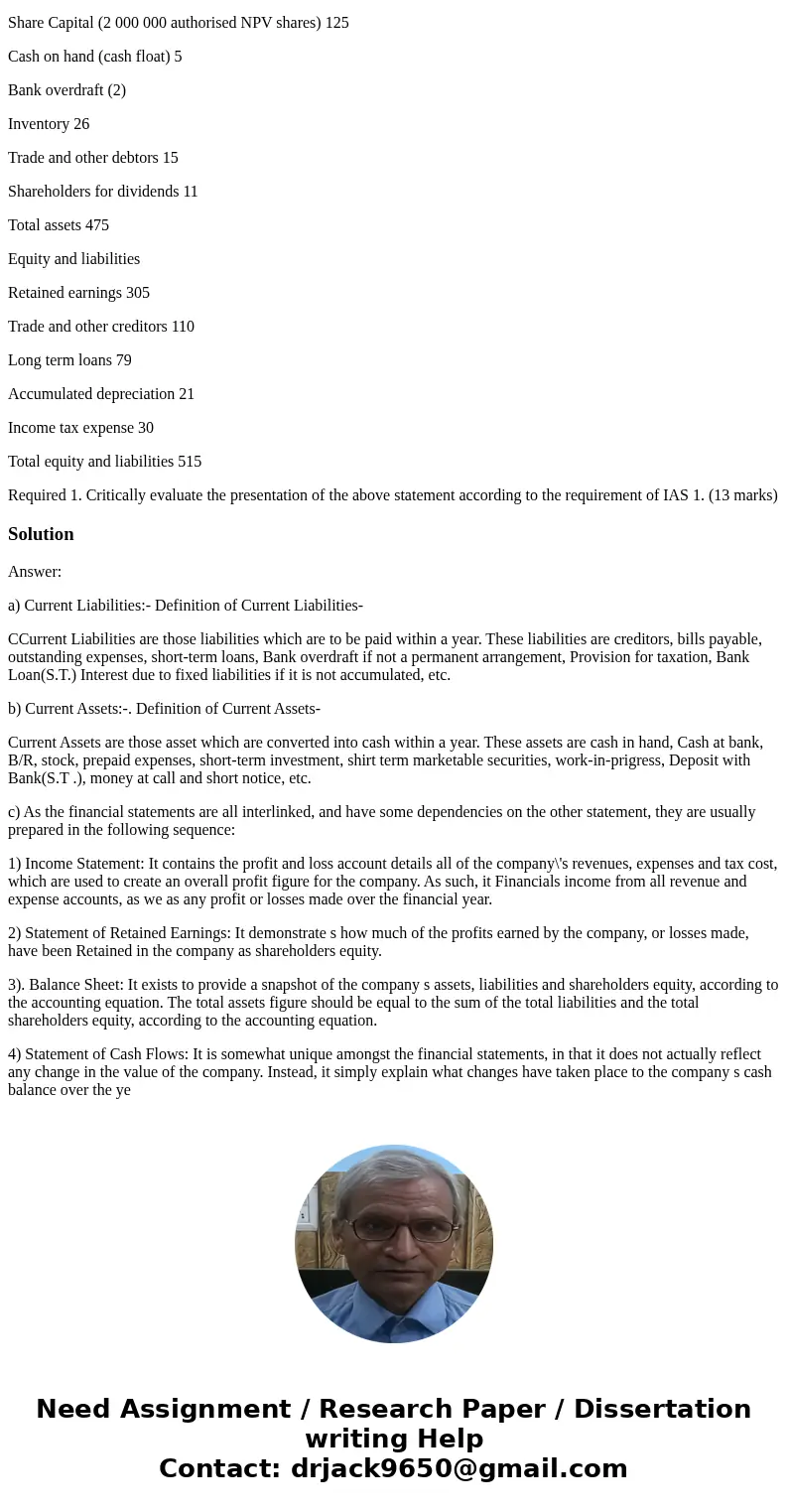QUESTION 2 25 Marks 45 minutes 21 Answer the following quest
QUESTION 2 (25 Marks: 45 minutes)
2.1 Answer the following questions:
a) Define current liabilities (2 marks)
b) Define current assets (2 marks)
c) In which sequence should notes to the financial statements be presented? (2 marks)
d) Discuss the identification of financial statements as noted in IAS 1. (2 marks)
e) Discuss consistency of presentation as a general feature of financial statements. (2 marks)
f) Discuss materiality and aggregation as a general feature of financial statements.(2 marks)
2.2 You are provided with the following statement of financial position of Brabham Limited:
Statement of financial position ON 31 December 20.12
ASSETS Land and buildings 165
Vehicle 85
Furniture’s 45
Share Capital (2 000 000 authorised NPV shares) 125
Cash on hand (cash float) 5
Bank overdraft (2)
Inventory 26
Trade and other debtors 15
Shareholders for dividends 11
Total assets 475
Equity and liabilities
Retained earnings 305
Trade and other creditors 110
Long term loans 79
Accumulated depreciation 21
Income tax expense 30
Total equity and liabilities 515
Required 1. Critically evaluate the presentation of the above statement according to the requirement of IAS 1. (13 marks)
Solution
Answer:
a) Current Liabilities:- Definition of Current Liabilities-
CCurrent Liabilities are those liabilities which are to be paid within a year. These liabilities are creditors, bills payable, outstanding expenses, short-term loans, Bank overdraft if not a permanent arrangement, Provision for taxation, Bank Loan(S.T.) Interest due to fixed liabilities if it is not accumulated, etc.
b) Current Assets:-. Definition of Current Assets-
Current Assets are those asset which are converted into cash within a year. These assets are cash in hand, Cash at bank, B/R, stock, prepaid expenses, short-term investment, shirt term marketable securities, work-in-prigress, Deposit with Bank(S.T .), money at call and short notice, etc.
c) As the financial statements are all interlinked, and have some dependencies on the other statement, they are usually prepared in the following sequence:
1) Income Statement: It contains the profit and loss account details all of the company\'s revenues, expenses and tax cost, which are used to create an overall profit figure for the company. As such, it Financials income from all revenue and expense accounts, as we as any profit or losses made over the financial year.
2) Statement of Retained Earnings: It demonstrate s how much of the profits earned by the company, or losses made, have been Retained in the company as shareholders equity.
3). Balance Sheet: It exists to provide a snapshot of the company s assets, liabilities and shareholders equity, according to the accounting equation. The total assets figure should be equal to the sum of the total liabilities and the total shareholders equity, according to the accounting equation.
4) Statement of Cash Flows: It is somewhat unique amongst the financial statements, in that it does not actually reflect any change in the value of the company. Instead, it simply explain what changes have taken place to the company s cash balance over the ye


 Homework Sourse
Homework Sourse